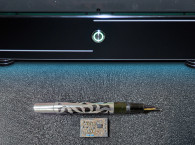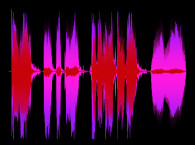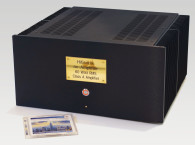Performance Summary
- Achieves 25Hz to 25kHz with silky-smooth response in a real room that has real reflections. Not just in an anechoic chamber.
- True Constant Directivity sound pattern 25Hz to 25kHz so imaging is superb anywhere in the room
- Open-Baffle Dipole sounds great even behind the speakers
- High Efficiency—95dB 1W/1m on average. Sounds great and plays loud even with “flea watt” single=ended vacuum tube amps
- High Power Handling and High Output—100W and 115dB full range, 1000W and 125dB with subwoofer
- Near-perfect impulse response
- Near-perfect phase response
- <1% Distortion
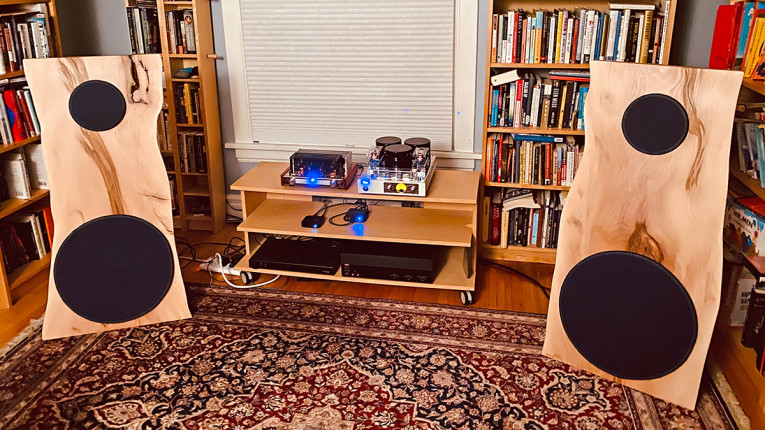
I have built almost every kind of speaker you can imagine, and though sealed and ported speakers are the most “textbook correct” and straightforward to design… horns, transmission lines, and dipoles are a lot more musical and more fun to listen to. When you really get them right, the sound is incredible. When my friends visit, most have never heard anything like these live-edge dipoles. When you play classic Miles Davis recordings, they have a huge, lifelike, warm, present sound. If you play Rush or Porcupine Tree, they handle the dynamics and bass with ease.
E.J. Jordan once said, “Art is science with more than seven variables” and this is a great truth. One of the realities that designers of transmission lines, horns, and dipoles accept is that as soon as you put your speaker in a real room, your dreams of perfection go out the window.
The Radiation Pattern
In speaker design, the elephant in the room is the room. Radiation pattern is one of the most important and overlooked aspects of a speaker. A good radiation pattern makes a huge contribution to how realistic the sound is. A speaker with great response on axis and bad response off axis will inevitably sound unnatural. Room reflections are all telling your ears “this is fake sound.” With a good dipole, you frequently find yourself marveling at how realistic the illusion of live sound is.
Constant Directivity is what you really want. Constant Directivity means you have flat frequency response on axis, and as you turn the speaker in any direction, the level steadily drops off axis, but the octave to octave balance remains flat. Then imaging will be great anywhere in the room.
The way to achieve this is with a Constant Directivity horn. Horns are harder to work with — they usually don’t have perfectly flat on-axis response, and you have resonances and complex impedance loads to deal with. However, CD horns are mathematically optimized toward this ideal radiation pattern, and the good ones achieve it.
A constant directivity woofer is impossible — unless you build a dipole. A dipole gives a “figure 8” radiation pattern where the front and back give strong on-axis response, and the backwave progressively cancels the front wave was you move off axis (Figure 1).
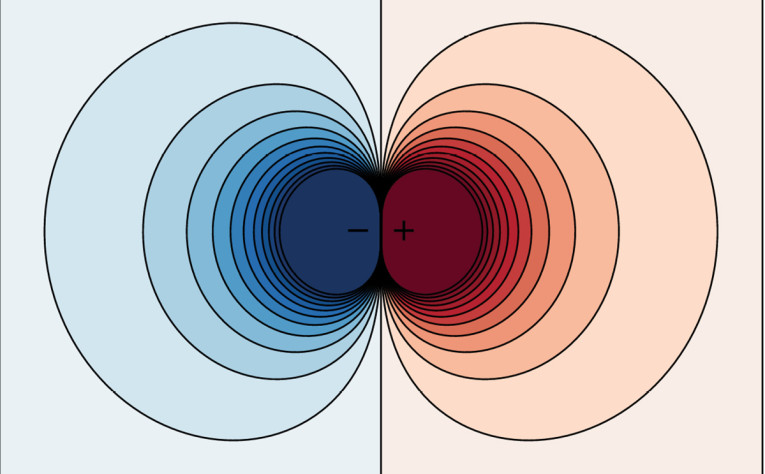
So… if you design a dipole using a coaxial woofer where the tweeter is a Constant Directivity horn — and if you add a CD horn tweeter on the back to make the back and front symmetrical — you get a true Constant Directivity response both front and back. The dipole configuration automatically makes the woofer into a Constant Directivity source.
I found that adding a rear tweeter is a significant enhancement because then the dipole radiation extends to both extremes (Photo 2). You design the speaker for radiation pattern, dipole Constant Directivity pattern across the entire range… then you fix frequency response problems with digital signal processing (DSP). This gives you an amazing speaker that gives you imaging and sound staging that are physically impossible for cones and domes to achieve.

With the Live-Edge Dipoles, you can walk all over the room — even stand on the far side of the left or right speaker, and you still clearly hear the other speaker across the room and the imaging is still stable. There is no one “sweet spot.” Music sounds fantastic anywhere you go in the room. You can walk around and behind the speakers and they still sound great! This, in addition to careful attention to phase and impulse response makes for fantastic imaging.
I took a group of response curves (Figure 2), with great results. I’ve seen a few speakers that achieve this above 500 or 1000Hz; I’ve never seen any other speakers that achieve this from 25Hz to 20kHz.

Design Priorities
Accurate frequency response is a major objective, but I have other priorities as well:
- Lifelike presentation of acoustic instruments like string bass
- Extremely high resolution of drums, percussion, and plucked instruments
- A huge soundstage
- High efficiency
- High output
- Very deep bass
- Flat phase response, accurate impulse and step response
- Separate amplifiers for low and high frequencies
- In a real room, flat frequency response in the lab translates to the low bass being about 10dB stronger than the highs. Figure 3 shows a 1/3 octave average of seven off-axis angles.
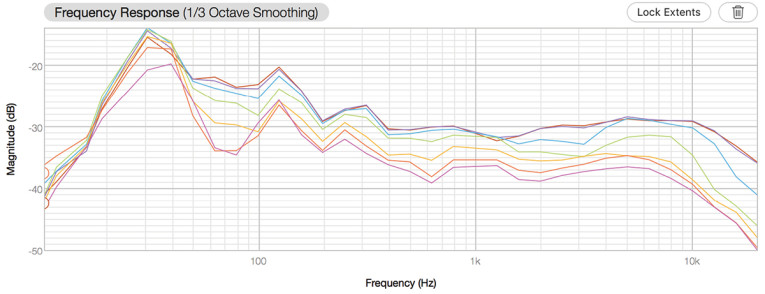
In order for the speakers to be highly efficient, I chose the Eminence Kappa Pro 18LF woofer, an 18” pro bass driver with 98dB sensitivity for 1W, ±8mm excursion (Xmax). Mounted in my dipole configuration, the resonance is 27Hz with a Qt of 0.5.
Traditionally, dipole designers prefer high-Q woofers. The dipole starts rolling off below 70Hz and drops 6dB per octave. Since none of the available high Q woofers had 8mm of excursion, I used DSP to EQ the bass.
I also chose the 8” Radian 5208 coaxial mid bass + Constant Directivity horn tweeter (16Ω tweeter with aluminum diaphragm). The 8” Radians have 95dB sensitivity in the midrange and the tweeters deliver 105dB (Photo 3).
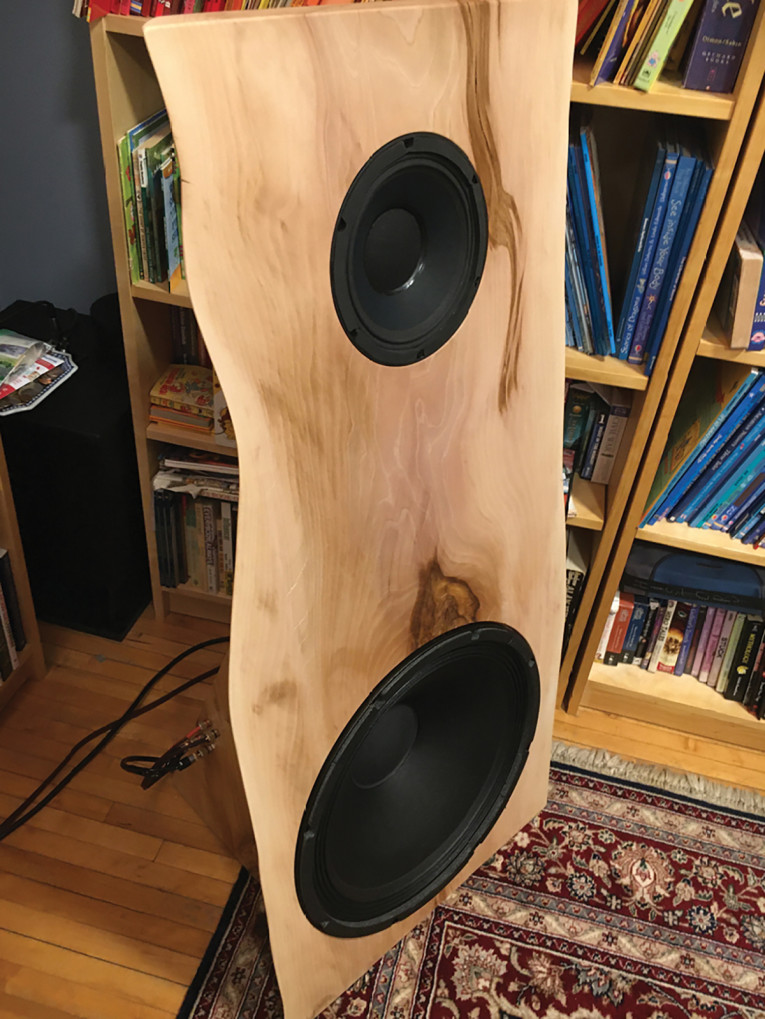
The Eminence 18” woofer moves a ton of air. Bill Duddleston of Legacy Audio says: “If you can see the cone moving, it’s distorting.” There is something entirely different about a speaker that has “dynamic range to burn.” The music is effortless, powerful and unrestricted at all volume levels.
Crossover Details
I could have triamped these, but biamping dramatically reduced complexity because it enabled me to use a two-way MiniDSP 2x4HD digital crossover. The bass amp drives both woofer and midrange, and the treble amp drives the tweeters. Crossover frequencies are 200Hz and 2kHz. DSP aligns the impulse timing of the drivers to within 0.01ms.
This required a very simple series first-order crossover between the woofer and midrange. A series crossover yields fewer impedance problems than a parallel crossover. This is effectively a 6dB/octave crossover. However, in reality the slope is closer to 12dB. This has too much phase shift, so I wired the midrange in reverse polarity, then compensated for the phase shift using a Finite Impulse Response DSP filter (Eclipse Audio software).
I also used Finite Impulse Response DSP correction on the tweeter. This solves phase shift problems and gives you an incredibly clean impulse response. Figure 4 shows the impulse response for the entire system as a whole. The impulse response should look like an upside-down T, and it does, with only a touch of overhang. And as you can see, the phase response is ±45 degrees from 40Hz to 25kHz with no polarity reversals or phase rotations. 99.5% of speakers butcher impulses. 99.5% of speaker designers ignore phase response and only give a shrug to impulse response.
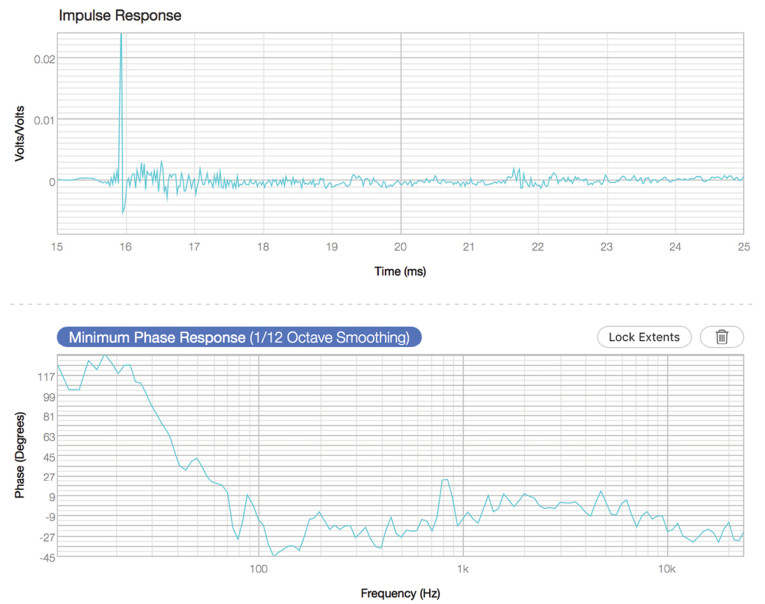
It has long been asserted that you cannot hear phase anomalies, so it doesn’t matter. But, I’ve never understood that argument. Most audiophiles have arguments about stuff you can hear but can’t measure… But why would you completely ignore a problem you can easily and obviously measure?
Answer: Because phase shift is actually very hard to solve without DSP. So designers just wimp out on it and say it doesn’t matter. With DSP it is solvable, though. And companies like Thiel, Vandersteen and Duntech built product lines around linear phase even with passive crossovers and earned well-deserved respect for doing so. If your speakers have good impulse response, they will also image well.
How Do They Sound?
These are truly high-definition speakers because they reveal everything. Stereo images are incredibly detailed and holographic, much like celebrated mini monitors are famous for… except the stereo image is huge.
Most speakers, truth be told, make musical instruments sound like they are being played by people who are 3’ tall. With the Live-Edge Dipoles, a double bass sounds the size of a double bass. Instruments and performers sound larger than life, which is gratifying. You could say they sound like electrostatics when you’re playing choral music and they sound like Klipsch when you’re playing ZZ Top or Mickey Hart. They have the finesse of a KEF, Bowers & Wilkins, or Duntech, with the transparency of a MartinLogan, and the dynamic range of a Klipsch.
And the horns do not sound like horns at all. They just sound like great tweeters. And again, because of the Constant Directivity, they image well everywhere in the room. Planars and electrostatics don’t do that. Figure 5 shows the digital EQ curve that sounds best with these woofers. As you can see, I have 20dB of boost at 29Hz with a gentle roll-off below that point. Bass declines rapidly below 25Hz. Yes, there are a very few albums where you can tell that the dipoles are running out of steam at ultra-low frequencies. For 95% of music, these things shake the house.

The midrange EQ you see in Figure 5 only serves to correct some minor problems. The crossover function for the midrange is performed by this FIR DSP filter (see Figure 6). Together these filters tailor the 18” woofer + 8” midrange combination.

The tweeter is a combo of FIR filter, which only addresses the overlap with the midrange at 2kHz (Figure 7), which is combined with an 18dB/octave IIR filter to finish what the FIR filter couldn’t (Figure 8), and a little bit of EQ to dial in the exact tonality (Figure 9).
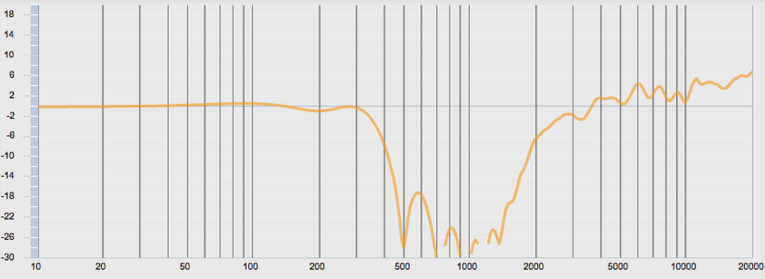
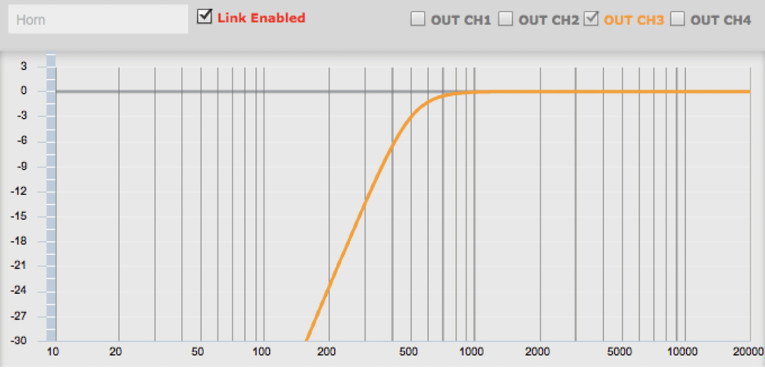

On the back is a PRV WG175PH horn tweeter. Its response is similar enough to the Radian Coaxial. An L-Pad adjusts the level. This curve shown in Figure 10 is when set at 3 o’clock. It was taken on the backside of the speaker. Figure 11 shows the harmonic distortion. Above 50Hz, it’s less than 1%.
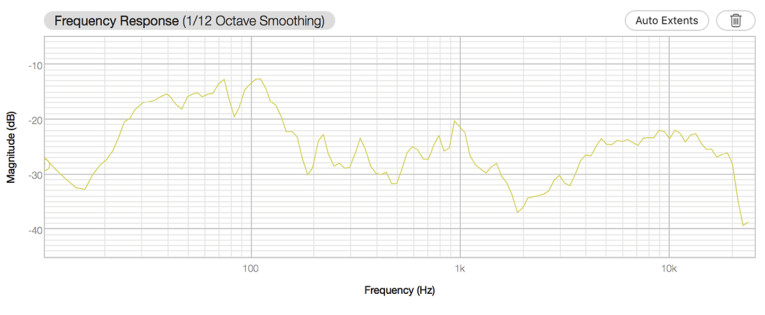
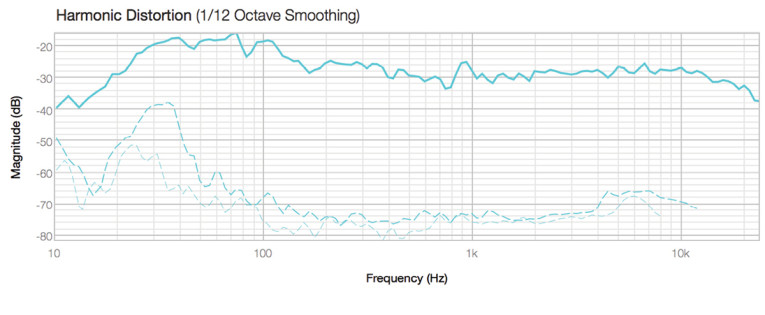
Step response is the speaker’s response to a sudden change from 0V to 1V. It shows you how much the woofer cone flops around before it comes to a stop. Figure 12 shows that this is clean and very well damped, which indicates tight, well-controlled bass. The polar heat map shown in Figure 13 confirms the capability of these dipole speakers.
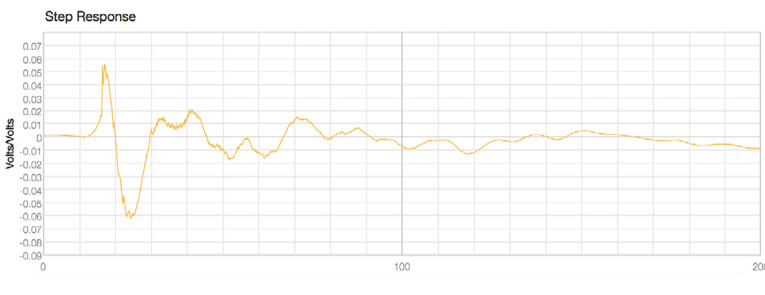

Active Crossover DSP Files
The active crossover DSP files for this article can be found in the Supplementary Material section of the audioXpress website. However:
These will ONLY work in the MiniDSP 2x4HD. Any other DSP requires your own files.
These are based on actual measurements for my exact drivers. If you want to base these on the drivers you buy (you should!), you need to make your own measurements and convert them to a .bin file using a program (e.g., Eclipse Audio FIR designer, https://eclipseaudio.com) and upload them to the DSP unit.
You will have to adjust levels of the drivers, and perhaps even the time delay between them, to your situation.
The passive crossover just does the absolute minimum and the DSP does all the heavy lifting. All crossover parts were purchased from Parts Express. Figure 14 shows the schematic for my live-Edge Dipole design, and I have also provided the Parts List.
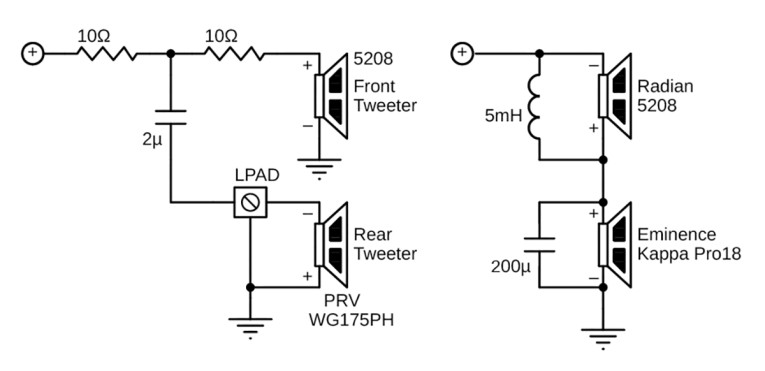
Cabinets
I bought slabs of birch from Big Red Sawmill in Nebraska. You can use any kind of wood or other material you like. I bet you could find some really cool applications of reclaimed wood. When I bought mine, I didn’t realize that the panels were just a little too narrow to comfortably accommodate the support structure behind the 18” woofers.
I hired Seth Cothron in Chicago, IL, to build the cabinets (instagram.com/studio38designs) and all I gave him was some sketch drawings and circles drawn on the wood. The dimensions can be found in the Supplementary Material on the audioXpress website.
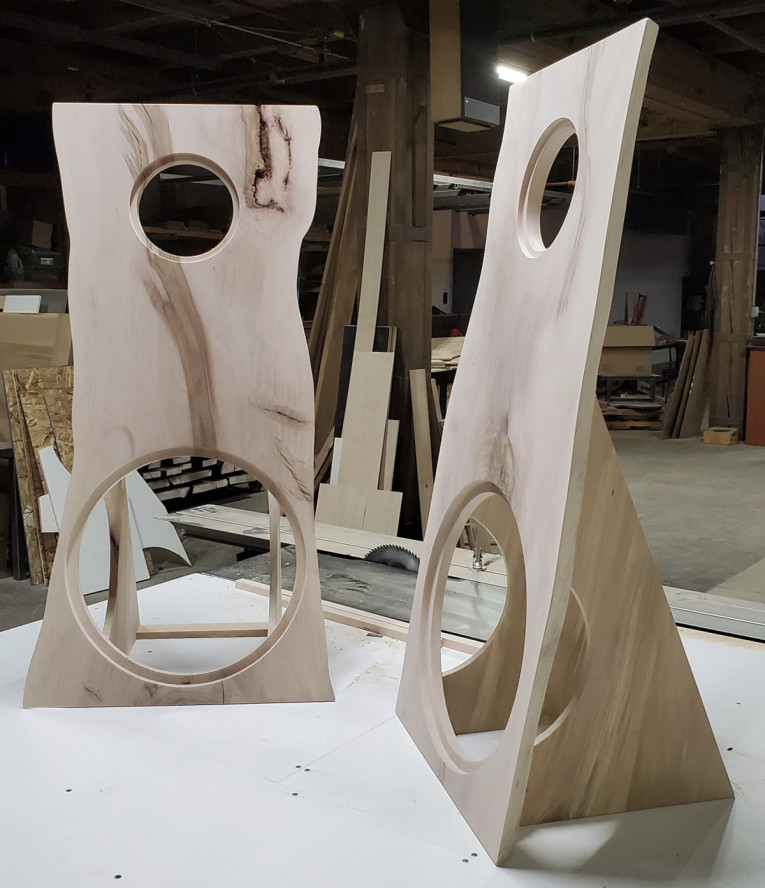
Seth proceeded to use his artistic sensibilities and a few weeks later he sent me a stunning photo
(Photo 4). Unfortunately, Seth shouldn’t have cut those circles into the rear triangle pieces. Those would make a huge leak that will cut down my bass response. (Those holes would cost almost an octave of bass.) So, Seth created curved discs out of cardboard and fitted them to plug the holes (Photo 5). When you build the speakers, I suggest you choose stock that’s an inch or two wider. Seth cut grille frames with a CNC machine (Photo 6).
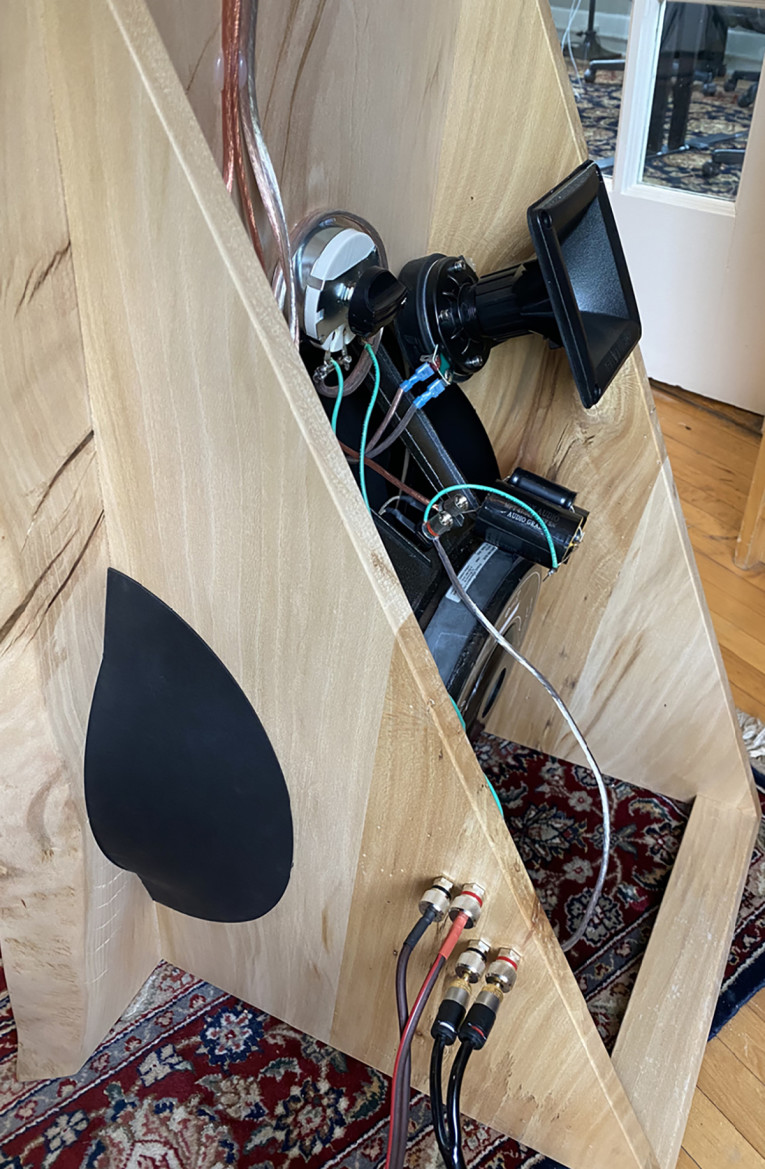
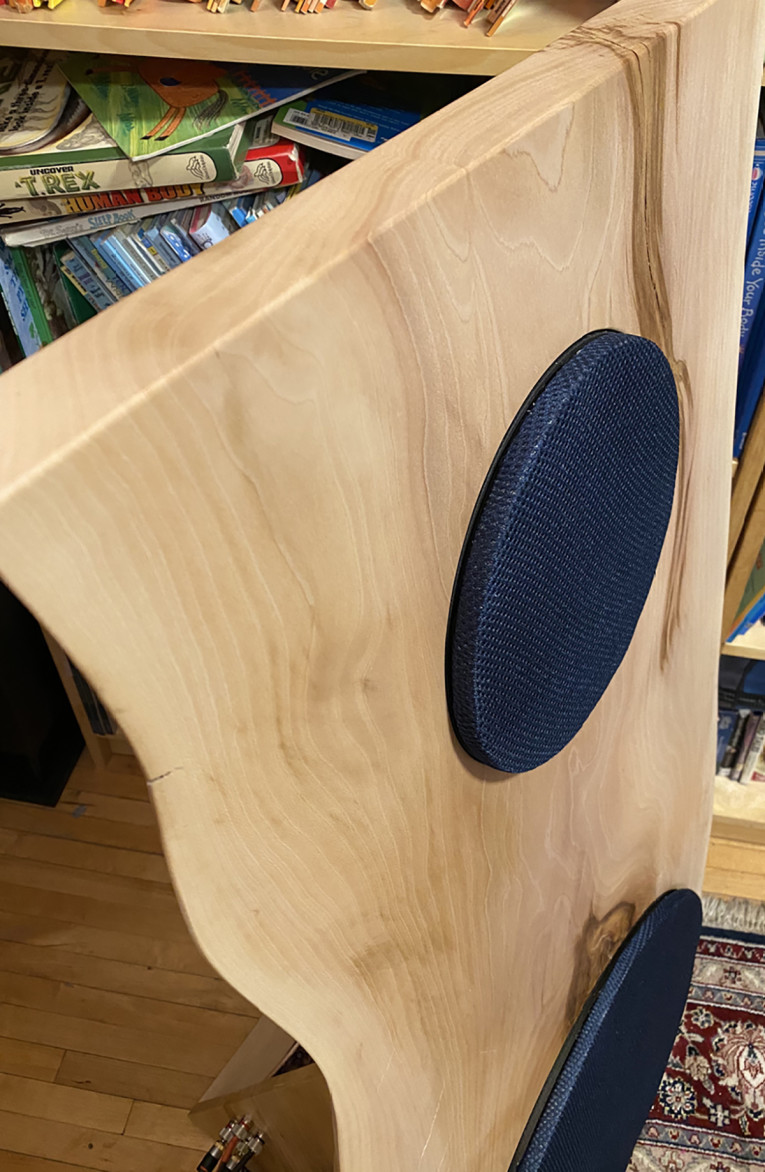
In Summary
Trumpets sound incredibly real, as does upright bass. If you play electronic music like the Matrix soundtrack, they easily keep up with the deep bass and synthesizers. If you play string quartets and choirs, they have a presence and realism that gives me goosebumps and brings my 21-year-old son to tears. My friend Finn Peacock in Australia also built Live-Edge Dipoles. He emailed me today and said, “I couldn’t drag my wife away from it — she got out all her favorite CDs that she hasn’t touched in years, kicked me out of the garage and just listened in awe.” I encourage you to spin off your own variation on this project!
Parts List
Speaker Parts (from Parts Express)
2 Eminence Kappa Pro 18LF 18” woofer
2 Radian 5208 8” coax mid-woofer with 16Ω tweeter (from Radian Audio Engineering)
2 PRV WG175PH horn tweeter
4 Binding Posts for speaker cables
2 L-Pad (Part #260-255)
1 MiniDSP 2x4 HD digital signal processor
* Measurements made with FuzzMeasure software. Power handling is 100W. If you add a subwoofer,
they’ll handle 500W or more.
Crossover Parts (from Parts Express)
5MH air core inductors
200µF is a combination of 100µF electrolytic +
2x 47µF film capacitors film capacitors
10Ω, 10W resistors
Dayton 50W L-Pads
This article was originally published in audioXpress, January 2021



